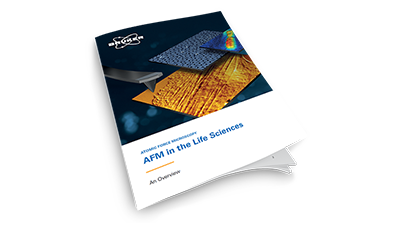

Bruker Atomic Force Microscopes
Driving Discovery Across the Widest Array of Disciplines and Applications
Bruker’s portfolio of atomic force microscopes (AFMs) and BioAFMs is built on decades of proven performance, incorporating an unmatched number of patents and proprietary innovations. This has helped our customers perform world-changing research and stay at the cutting-edge of their industries.
About Our Materials Research AFMs
Bruker has a versatile range of AFMs for materials research that deliver highest-quality data by optimizing spatial resolution, speed, and sample compatibility.
Powered by proprietary PeakForce Tapping® technology, these systems are helping researchers advance new nanomechanical, nanoelectrical, and nanoelectrochemical research, on the order of three peer-reviewed published articles per day. We are continually developing new innovations in modes, probes, and instrumentation to expand AFM technology capabilities.
About our BioAFMs for Life Science Research
Bruker’s BioAFMs have been specifically designed to accommodate soft matter and biological specimens, enabling scientists to perform advanced nanoscale research on live cells, proteins, and tissues under near-physiological conditions.
Unique innovations, such as specialized force control systems, minimize sample damage. Advanced imaging modes, such as PeakForce-QI™ mode, combine fast, high-resolution scanning with automated, reproducible measurements. Leading-edge features — including high-speed imaging at up to 50 frames per second, integrated optical microscopy, and intelligent automation — not only enhance the resolution and speed of dynamic experiments, but also facilitate long-term, self-regulating studies of mechanobiological processes.
Why Choose Bruker AFMs
What sets Bruker AFMs apart are their high performance, flexibility, and ease of use. Their industry-leading range of capabilities results from a combination of innovative design and specialized software. Proprietary modes and extensive accessory options provide researchers turn-key solutions for both the rigors of materials research and the delicate demands of biological samples.
Bruker AFMs merge automation with advanced imaging techniques to transform what were once painstaking manual experiments into highly efficient, user-friendly procedures. Automated tasks and workflows lower the barrier of entry for new researchers and significantly accelerate discovery.
Contact A Bruker AFM Expert
Ask us a question, request more information, or get expert instrument and configuration recommendations to fit your specific measurement needs.

